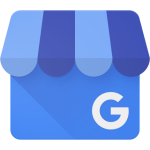Connect Autopilot to Google My Business


About Autopilot
Autopilot is a visually-focused marketing software that provides tools for automating a customer’s journey. These include custom triggers that can be mapped out and automated ahead of time so that you can send the right kind of follow-up communications to the right customers. Autopilot can also automatically capture visitors, segment contacts using pre-established filters, and track the progress that a company is making towards a marketing goal. This allows users to make modifications that increase efficiency in real time.
About Google My Business
The Google My Business API allows you to manage your business locations on Google so that your customers can always find you, no matter what device they’re using.
Popular Use Cases
Bring all your Autopilot data to Amazon Redshift
Load your Autopilot data to Google BigQuery
ETL all your Autopilot data to Snowflake
Move your Autopilot data to MySQL
Bring all your Google My Business data to Amazon Redshift
Load your Google My Business data to Google BigQuery
ETL all your Google My Business data to Snowflake
Move your Google My Business data to MySQL
Autopilot's End Points
Autopilot Contacts
Autopilot Smart Segments
Autopilot Journeys
Google My Business's End Points
Google My Business Admins
Google My Business Accounts
Google My Business Locations
Google My Business Attributes
Google My Business Categories
Integrate Autopilot With Google My Business Today
The no-code pipeline platform for
your entire data journey
TRY IT FREE FOR 14-DAYS

Integrates With
Get Started On Your
Data Integration Today
Powers your company decision making
and operational systems with our one-stop
ETL and data integration platforms
TRY IT FREE FOR 14-DAYS










